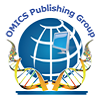Our Group organises 3000+ Global Conferenceseries Events every year across USA, Europe & Asia with support from 1000 more scientific Societies and Publishes 700+ Open Access Journals which contains over 50000 eminent personalities, reputed scientists as editorial board members.
Open Access Journals gaining more Readers and Citations
700 Journals and 15,000,000 Readers Each Journal is getting 25,000+ Readers
Indexed In
- Google Scholar
- RefSeek
- Hamdard University
Useful Links
Share This Page
A 3D numerical model of cell differentiation and proliferation
Mohamed Hamdy Doweidar and Seyed Jamaleddin Mousavi
Abstract
Mesenchymal stem cells (MSCs) have the ability to differentiate into many cell phenotypes such as fibroblasts, chondrocytes, osteoblasts and neuronal precursors. Experimental studies have demonstrated that mechanical characteristics of the substrate, such as substrate stiffness, fluid flow and mechanical forces can govern their fate even in absence of biochemical factors. However, the signaling mechanism behind this process is not well understood. The main objective of the present work is to develop a numerical model to study the influence of substrate mechanical conditions on cell differentiation, proliferation and apoptosis. To formulate the model, a discrete finite element approach has been appreciated. For the sake of simplification, it is assumed that the cells have a spherical shape; however it is possible to consider any other cell configuration. We consider that these processes are related to the received mechanical signals by cells and its maturation time. It is assumed that the cell fate is governed by the cell internal deformation experimented during cell migration. Consistent with experimental observations, our findings indicate that within soft (0.1-1 kPa), intermediate (20-25 kPa) and hard (30-40 kPa) substrates MSCs proliferate and then differentiate into neuroblasts, chondrocytes and osteoblasts, respectively. The traction force generated by a specific cell phenotype can increase (osteoblasts and chondrocytes) or decrease (neuroblast) during differentiation. In contrast, in all cases the proliferation of a typical cell considerably increases the average cell traction force due to the cell-cell interaction. Hence, greater the substrate stiffness, the higher is the cell differentiation and proliferation rate.Biography
Mohamed Hamdy Doweidar is a Full Associate Professor at the Mechanical Engineering Department, University of Zaragoza, Spain. Besides, he is a Member of the Group of Structural Mechanics and Materials Modeling (GEMM), the Biomedical Research Networking Center in Bioengineering, Biomaterials, and Nanomedicine (CIBER-BBN), the Aragn Institute of Engineering Research (I3A), and the European Society of Biomechanics (ESB). He has participated in many national and international investigation projects. He has authored and co-authored many books and numerous articles in international journals. His investigation interests include Computational Biomechanics, Cell Simulation, Finite Element Method, Natural Element Method and Computational Fluid Dynamics.

 Spanish
Spanish  Chinese
Chinese  Russian
Russian  German
German  French
French  Japanese
Japanese  Portuguese
Portuguese  Hindi
Hindi